The Country's Best New Restaurant Is a Tribute to Indigenous Cultures Across North America
The James Beard Award-winning Owamni is just one project from the founders of NĀTIFS, a Minneapolis-based culinary nonprofit.
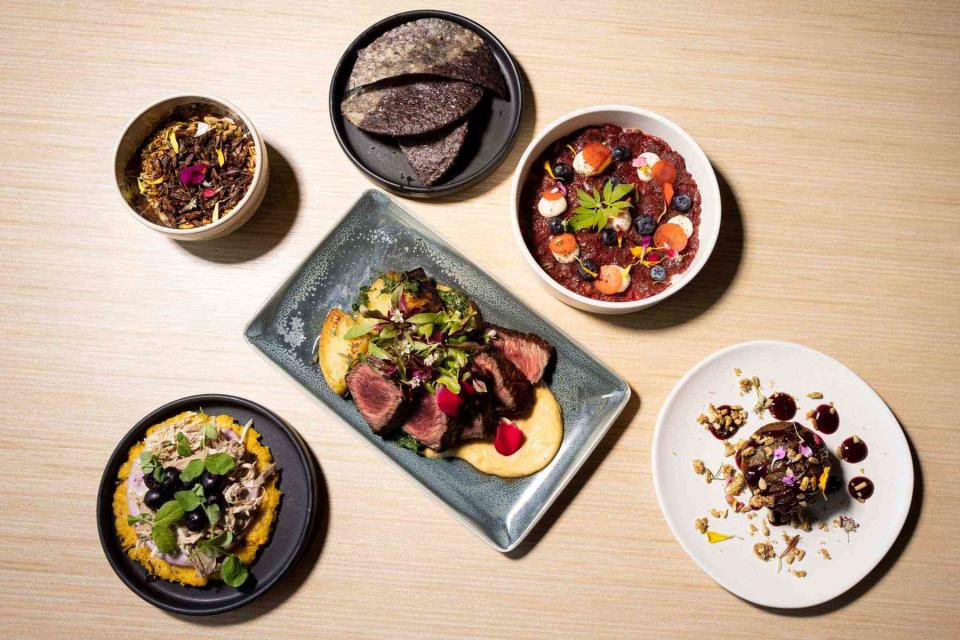
Ackerman + Gruber
Owamni, which won the title of Best New Restaurant in the 2022 James Beard Awards, isn’t just changing the culinary landscape of Minneapolis. It’s also bringing Indigenous food traditions — finally — to the forefront, staying rooted in the land, the people, and the tradition of resistance.
Chef Sean Sherman (Oglala Lakota) and co-owner Dana Thompson (lineal descendant: Mdewakanton Dakota, Wahpeton Sisseton) work only with foods used in North America pre-colonization — that means no dairy, wheat, refined sugar, beef, chicken, or pork. Instead, dishes might feature foraged plants, local game and fish, “alternative” proteins like crickets, and wine and beer from primarily Indigenous-owned producers. North American Traditional Indigenous Food Systems (or NĀTIFS), the nonprofit Sherman and Thompson started in 2017, has also launched the Indigenous Food Lab, offering cooking and foraging classes as well as training for Native chefs hoping to build their own businesses.
We asked Sherman and Thompson about some of their favorite items from the Owamni menu — and the meaning behind them.
Cricket & Seed Mix
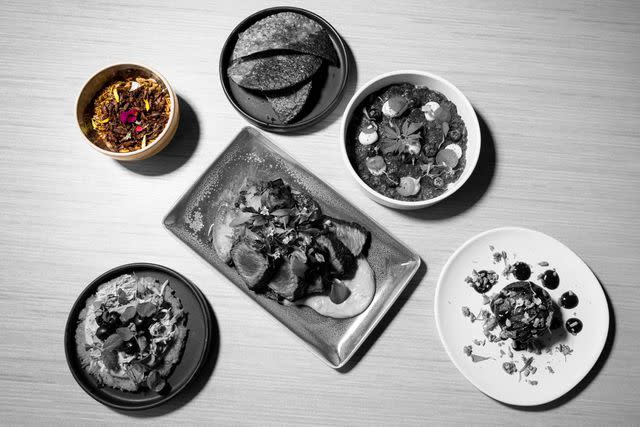
Ackerman + Gruber
Crickets are a sustainable protein that we should all eat a lot more of. This preparation reminds me of when I lived in Mexico, where insect usage is much more normal. You just go to a mercado and there will be a huge bin of crickets. — Sherman
Turkey Choginyapi
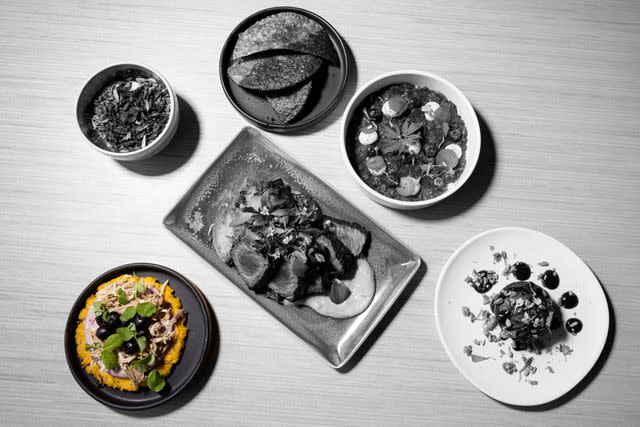
Ackerman + Gruber
Berries grow prolifically all around Minnesota. I’m a big berry fan; my favorite is blueberry. We cook seasonally, so in the summer, the aioli for this corn sandwich might be made with wild blueberries, and, in the fall, probably Aronia berries. — Thompson
Bison Steak
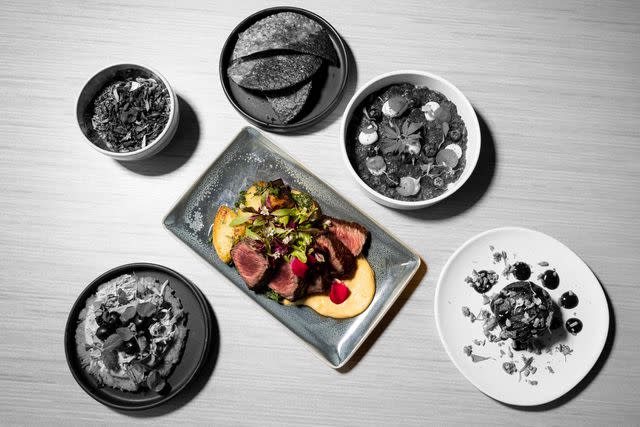
Ackerman + Gruber
I’m Lakota, and the bison is a sacred animal for us. We have so many stories that are interwoven with bison. Most of them were slaughtered in the mid 1800s as part of a strategy by the U.S. government to slowly weaken the tribes in the Midwest, the Great Plains, and other regions. But bison were brought back from near extinction, and today, we’re able to buy directly from a Lakota tribe, the Cheyenne River Sioux Tribe. — Sherman
Game Tartare With Blue Corn Tostadas
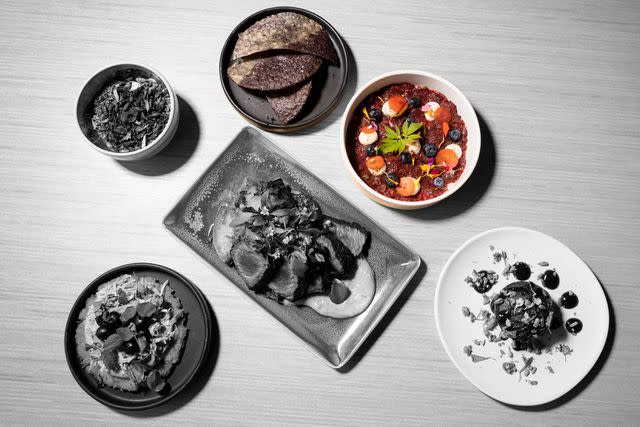
Ackerman + Gruber
I grew up deer-hunting in northern Minnesota, and hunting is so vital to Indigenous sovereignty. When Sean first created a tartare using game meat, I was blown away. It melts in your mouth. — Thompson
Maple Chaga Cake
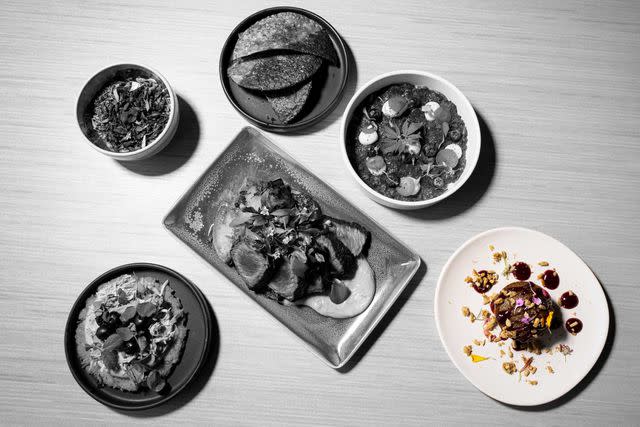
Ackerman + Gruber
Our methodology of removing colonial ingredients, things that didn’t exist here, included removing white cane sugar. To really showcase the flavors of where we are, we use a ton of maple syrup and maple sugar from this region’s harvest, which a lot of tribes still celebrate deeply every year. — Sherman
There are plenty of opportunities to support other Indigenous-owned projects in the Minneapolis area. After Owamni, stop by Louise Erdrich’s Birchbark Books, where the Chippewa author stocks works by Indigenous writers in every genre, plus art and artisan jewelry. Order a takeout box lunch at the Gatherings Café, by Diné chef Brian Yazzie, while its home at the Minneapolis American Indian Center is being renovated; the restaurant, which will reopen in 2024, has become a destination for dishes like Red Lake walleye tacos, wild-rice salad, and bison with heirloom-corn polenta.
A version of this story first appeared in the December 2022/January 2023 issue of Travel + Leisure under the headline "A Place at the Table."
For more Travel & Leisure news, make sure to sign up for our newsletter!
Read the original article on Travel & Leisure.


